Since I’ll be posting a lot about the Manueline buildings we saw in Portugal, I’ll start with an overview this particular style of architecture and ornamentation.
What happened was this: Portuguese explorers, relying on the navigational instruments left behind by the Moors during the years Portugal was under Muslim control, sailed all over the globe, trading in spices, slaves, and Catholicism. The spices and slaves made the traders and explorers super-duper rich and super-duper proud of how they navigated to all those far away places. In the early 16th century all that money and national pride was channeled into fancy buildings, called Manueline after Manual I, the Portuguese king who died in 1521.
The bones of Manueline buildings are standard High Gothic or early Renaissance. The ornamentation of these structures, however, is in no way standard. It’s not just that they are pimped out with excessive ornamentation, but that the ornamentation is so insistent. Imagine a bunch of high school theater nerds decorating a prom with the theme of “Ships Ahoy”. Or perhaps a small town Midwestern tavern with an aggressively nautical theme. But the theater nerds and the tavern designer have an unlimited budget and are able to hire the best artists with the finest materials.
The same symbols show up again and again in Manueline architecture and they are all about sailing or discovering new worlds.

From Batalha Monastery
The most common decorative element in Manueline design is the armillary sphere.
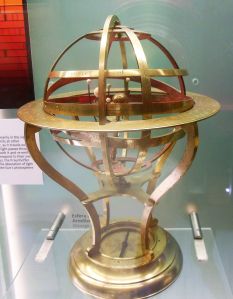
From the Science Museum of the University of Coimbra
An armillary sphere was a navigational instrument used by the Portuguese explorers.

From Batalha Monastery
Ropes are another common design element in Manueline architecture.
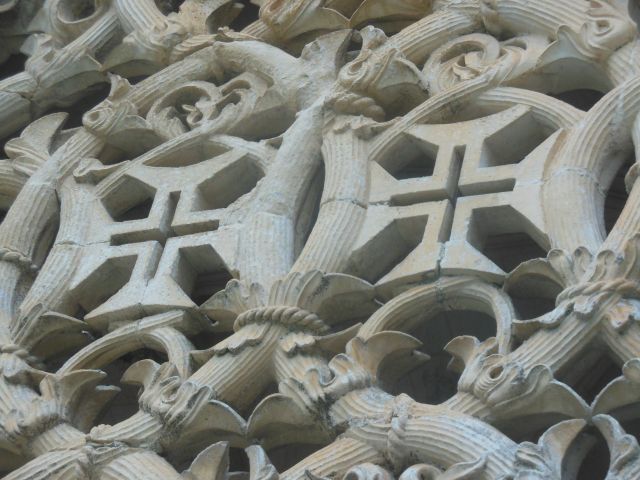
From Batalha Monastery
Despite being heavily utilized in religious architecture, the only religious symbolism used in Manueline architecture is this cross from the Order of Christ, and that only because it was also used on the ship’s flags.

From Batalha Monastery
Portuguese sailors ate artichokes to fend of scurvy so artichoke designs make a frequent occurrence.
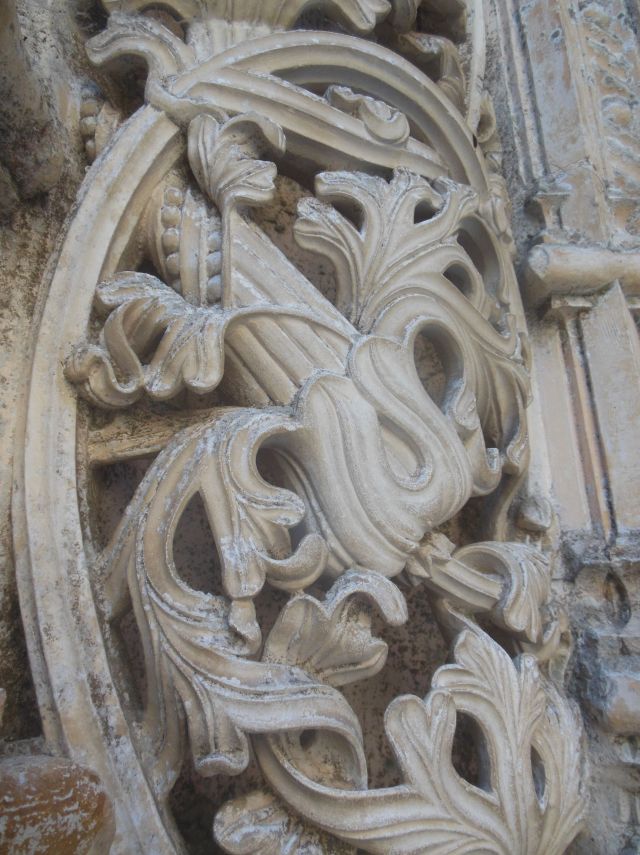
From Batalha Monastery
Corn, as the food of the New World, is also incorporated in unexpected ways.
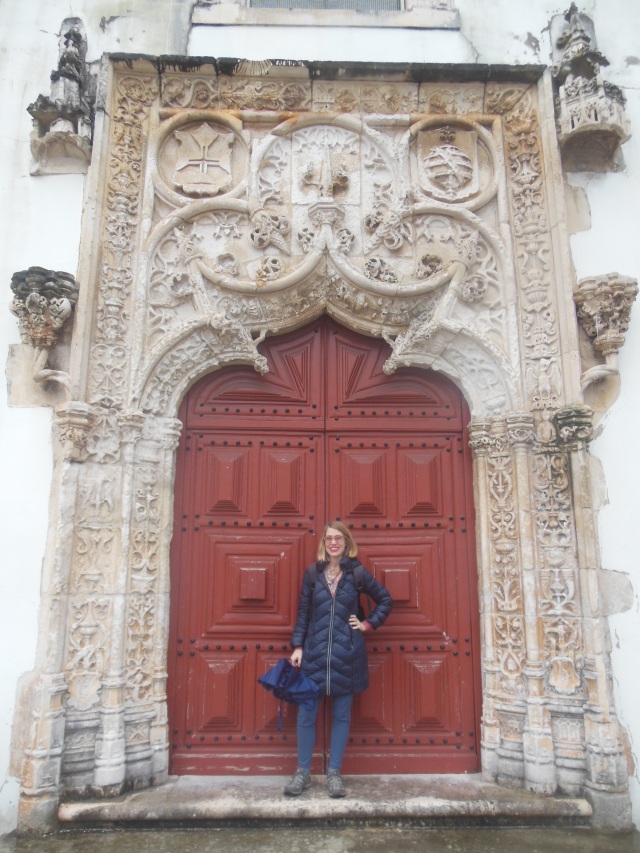
Door of Igreja Matriz da Batalha ou Igreja da Exaltacao de Santa Cruz
Do you spy with your little eye an ear of corn in this doorway? How about an armillary sphere? A cross from the Order of Christ?
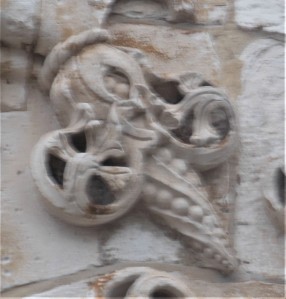
Detail from a door Igreja Matriz da Batalha ou Igreja da Exaltacao de Santa Cruz
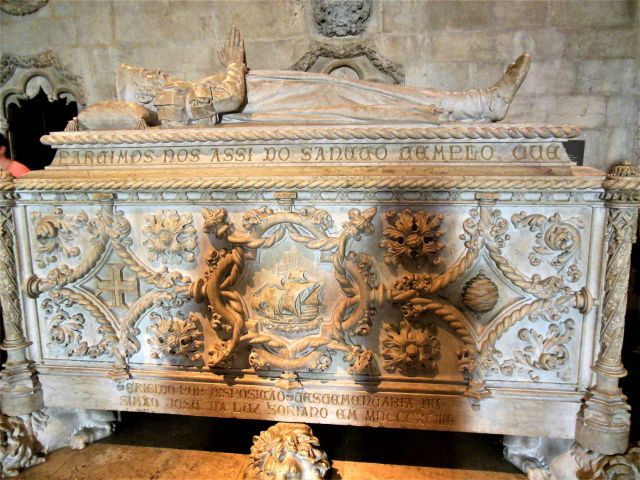
From Jerónimos Monastery
You hadn’t properly died in the Manueline era until you got yourself a nautical tomb. (The high school theater geeks put a ship right in the middle just so you’d really get it.)
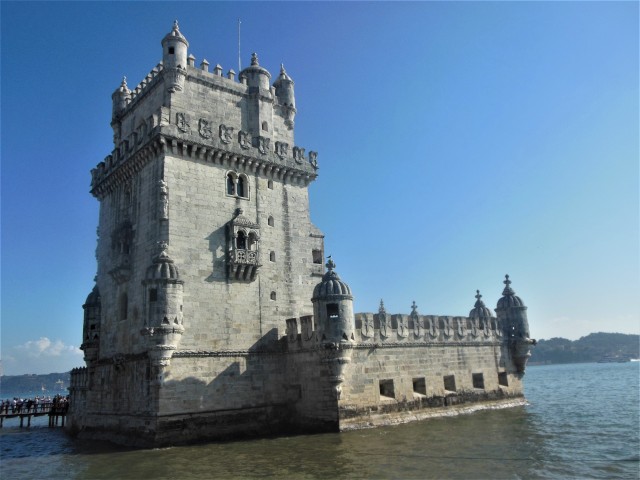
The Tower of Belém
Wait for it now, because the Tower of Belem is a Manueline building actually in a body of water. (Click on this hi-res image for glorious nautical detail).
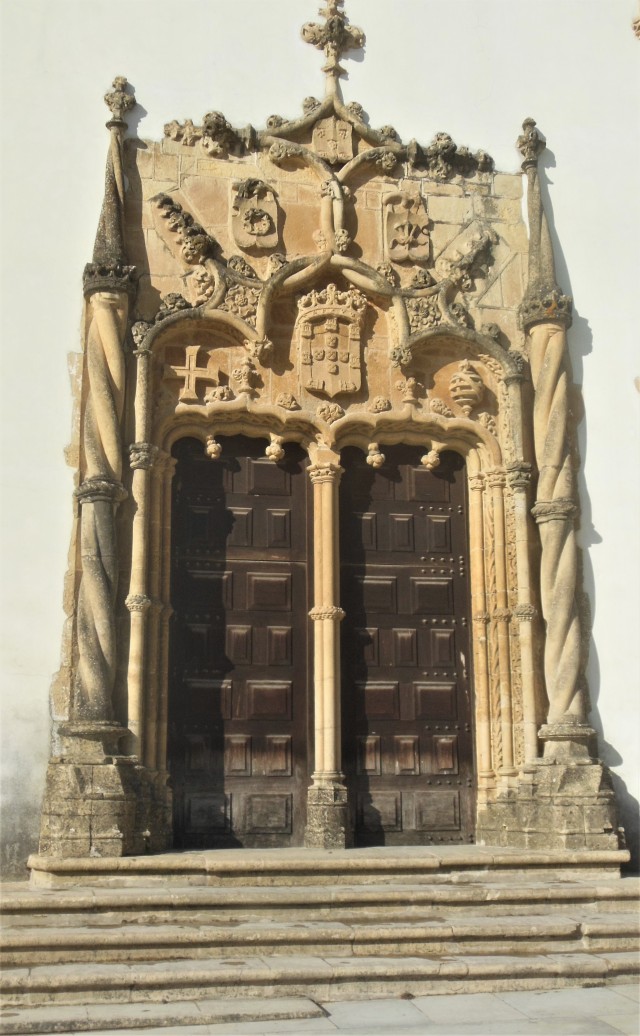
Door from Coimbra University
Distinct, regional, exquisitely crafted and insistent as hell—I’m glad I got to spend time with Manueline architecture. Now I think I need a pristine French Romanesque monastery as a palette cleanser….
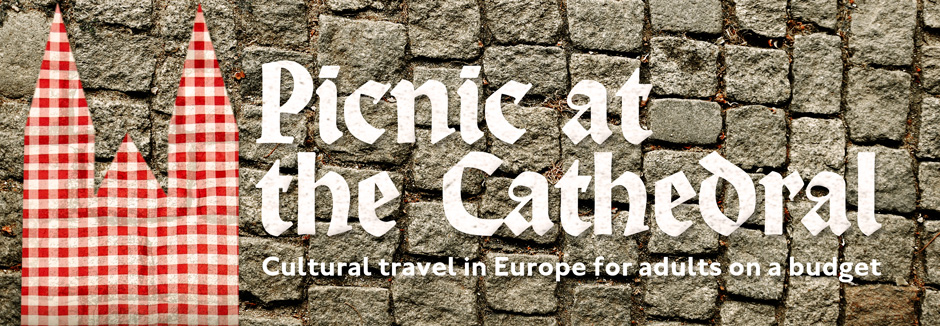

That’s a wonderful post. I have to now go through my photos again to spot the artichokes and corn that I never registered.
LikeLiked by 1 person
Thank you! I also saw a lot of things like snails, acorns and what might have been decorative seaweed.
LikeLike
Umm. I was so overcome by the pastry chef version of architecture that I just counted the different kinds of ships there were.
LikeLiked by 1 person
Wonderful description. I was amazed by the details. Sounds like you had a great trip.
LikeLiked by 1 person
Thanks—what we’ve learned to do is take most of a day just to look at one building and that helps. I need to slow down to catch all the details.
LikeLike
Wow! So many details I never noticed. Thanks for the great description and pointing them all out.
LikeLiked by 1 person
Thank you. My schedule has been a bit intense lately but I’m looking forward to having so more free time to write about these elaborate buildings.
LikeLiked by 1 person
The exuberance of Manueline architecture is captivating, and I’d love to see it all in person some day; thanks for sharing these examples!
It reminds me of the outer doorway of the north porch of St Mary Redcliffe in Bristol (http://www.geograph.org.uk/photo/1412344) for sheer joy, though the Manueline motifs you mention are naturally missing as this was carved in the early 14th century.
Nobody’s quite certain what influenced this unique design though Islamic architecture has been suggested—a surprising source for a church in the far northwest corner of Europe!
LikeLiked by 1 person
That’s 14th century?! I see a Phd thesis for an ambitious student on the origin of this door. Perhaps the artist was familiar with Indian temples?
LikeLike
It’s extraordinary—no religious references or animal figures, just decorative foliage and all those ogee-type angles. There are also some unusual “stellate tomb” recesses in nearby Bristol Cathedral (for example https://bristol-cathedral.co.uk/the-cathedral/explore-cathedral/tour-south-choir-aisle/) which aren’t found anywhere else, to my knowledge.
LikeLiked by 1 person
The lack of figurative art indicates a Muslim designer, perhaps. Anyway, darn you—now I’m going to have to go to Bristol to see for myself!
LikeLike
Do visit Bristol, my former home town, if you can: lots of street art, medieval buildings (those thats survived the Blitz), Regency architecture, bustling historic harbourside and famous Victorian suspension bridge spanning a gorge. I admit I’m a bit biased though!
LikeLiked by 1 person
This is so cool! I had no idea about any of this. You’re inspiring me to slow down and really look. It’s the same way my son used to insist on sightseeing. He used to kind of drive me nuts, but he was right. And I love Bristol! If you go, try to get to nearby Tyntesfield—a fantastic time capsule of a country pile.
LikeLiked by 1 person
You raised your son right! I’ll add Bristol and Tyntesfield to my loooooong list.
LikeLike
How do you even know this stuff is there? Did you read about it or did you just stare at it until you saw it? I always miss this stuff and then somebody tells me years later
LikeLiked by 1 person
I do a lot of research and carry around a binder with information I’ve photocopied from library books. And yeah, the staring thing helps too.
LikeLike
Its amazing what you can see….if you just look 🙂 Very interesting, never been to Portugal, which is strange as its not that from from the UK, maybe one day 🙂
LikeLiked by 1 person
You can get there without flying so your hubby can come too!
LikeLiked by 1 person
That is so true, through France, Spain, we would have to go the long way round 🙂
LikeLike
I feel a deep sympathy for those early Portuguese sailors (bouts of piracy and legacy of slavery nothwitstanding); it must’ve been quite a heady time if sailing and the urge to explore seeped even into architecture! In this current world were everyone talks of walls and stopping people, to see a culture openly saying “let’s go out to sea and do stuff!” seems quite refreshing!
Plus, they gave us Rio, Galle, Bahia…
Fabrizio
LikeLiked by 1 person
Oh yes, I’ll take the explorers over the wall builders any day!
LikeLiked by 1 person
Thannks for sharing this
LikeLiked by 1 person
Thanks for stopping by!
LikeLike